The scheme of a flower bed of continuous flowering from perennials: types and their features
An excellent opportunity to decorate a personal plot without much labor is to create a flower bed of perennials. If you choose the right types of plants, flowering will resume on its own with the onset of summer. Let us analyze the most popular schemes of continuous flowering flower beds from perennials and find out what subtleties exist in caring for such a flower garden.
Content:
- What perennials are suitable for creating a flower bed?
- Recommendations for creating a continuously blooming flower bed
- Where is the best place to arrange a flower bed?
- Schemes for creating carpet beds
- Schemes for creating island flower beds
- Curb flower beds
What perennials are suitable for creating a flower bed?
There are many options for organizing a flower bed of continuous flowering. Various types of perennial plants are suitable for their implementation. For convenience, we will divide them by height into more than three basic groups.
Low-growing species. Low-growing species include plants not exceeding 30 cm in height. From these plants, you can create a beautiful floral carpet. They are also used to "paint" on a flower bed. Here are some beautiful representatives of this group:
- Aster dwarf.
- Carpathian bell.
- Different kinds phlox.
- Various types of obriety.
- Saponaria, or soapwort.
- Gentian.
- Aquilegia or catchment.
Low-growing perennials require compliance with several special care rules dictated by the structural features of these plants:
- Due to their small size, these plants are especially sensitive to shade. Therefore, they can only be planted in well-lit areas, otherwise abundant flowering cannot be achieved.
- In a flower bed with stunted flowers, weeds will have to be especially carefully weeded out. They can not only ruin the look of the flower garden, but also greatly deplete the plants themselves.
- It is not recommended to use fertilizers rich in nitrogen. Adding nitrogen to the soil will increase green mass and pull out plants, but will not produce the desired abundant flowering. It is better to take complex fertilizer compositions designed specifically for flower gardens.
- Planting low-growing plants should be tight. The holes in the flower garden look very unaesthetic and spoil the look. A sparse planting is suitable only for medium and tall flowers.
If you follow these simple guidelines, a floral carpet of undersized perennial flowers will bloom every summer, decorating your site.
Medium-sized species. Plants fall into this category with stem heights ranging from 30 to 60 cm. These include:
Such views will allow you to add variety to the landscape with the help of multi-tiered compositions. They also look good in mono compositions.
Tall species. This group includes species whose growth exceeds 80-90 cm. Here are the most common garden perennial flowers from this group:
- Stock-rose.
- Mallow or mallow.
- Sapstone.
- Basil.
- Sinuous sunflower.
Tall species complement multi-level compositions. They look great on island flower beds.
Recommendations for creating a continuously blooming flower bed
A perennial flower bed will have a decorative look only when it is a complete ensemble. You cannot expect such an effect from randomly planted flowers. The construction of a flower bed should provide her with a beautiful view, regardless of which plants have already faded, and which ones are still blooming or will bloom later. In addition, such a flower bed should be easy to care for.
Here are some basic guidelines to remember before moving on to developing a specific flower garden scheme:
- Plants must be arranged according to their height. On an island flower bed, the tallest plants are placed in the center, and then towards the edges, the height should be reduced so that each new tier is lower than the previous one. If the flower garden is placed near a curb or wall, the tallest plants should be closest to it. Such placement will avoid shading of stunted plants by taller species.
- For a multi-colored flower bed, it is better to take undersized plants of pale shades as a background. Then bright tall flowers will create expressive color spots and will look very impressive.
- It is worth considering the recommendations for the care of each type of flowers that you plan to place in a flower bed. It is worth either picking up all the plants with the same irrigation regime, or dividing the existing plants with different regimes into several groups and placing these groups next to each other in the flower garden.
- A separate issue is the use of seasonal flowers in a continuously blooming flower bed. Irises, tulips, poppies and other similar plants look very impressive in bloom. But the time for their flowering passes quickly, and a withered plant can ruin the look of the flower bed. Some growers generally do not recommend using seasonal plants in continuously flowering compositions. But you can achieve the correct placement so that at the time of flowering seasonal plants will become a real decoration of the flower garden, and then they will be disguised by other plants.
Seasonal flowers do not need to be planted in the foreground. After flowering, they will spoil the look of the flower bed. Better to plant them next to lush and vibrant perennials. Then, after flowering is complete, they will mask the wilted stems.
Where is the best place to arrange a flower bed?
A flowerbed of continuous flowering can perform various functions on the site, in addition to decorative and aesthetic. Depending on this, you need to correctly plan its location. Here are some of the more typical options:
- A flower garden located in a lighted place. Here the aesthetic function comes first. It is worth making a flower bed so that flowering plants gradually replace each other.
- A flower garden located in the shade. Such a flower bed will help to take a place on the site that is not suitable for other plants, to decorate an empty corner. Usually, plants with beautiful green foliage or needles (thuja spherical, horizontal juniper, hosta) are selected here, and flowering plants are selected in dull shades.
- A flower bed along a fence or wall.
- A flower bed dividing the garden into zones. Here, tall flowering plants in combination with decorative coniferous shrubs will be in place.
- Flower garden at the entrance to the site. This flower bed is destined to play the role of a bright spot that pleases the eye of a person immediately upon entering. Plants with bright, catchy flowers are needed here. But it is important not to overdo it, so as not to dazzle in the eyes.
Depending on the purpose, you can build a flower garden according to different schemes. The main thing is not to forget about the general rules that ensure rapid growth and abundant flowering of plants.
Schemes for creating carpet beds
To create a living carpet, you need to decide on the layout of the plants and select the components to create the scheme. It is better to select plants of the same type.Otherwise, problems may arise when some plants are ahead of others in growth. It is also very important to achieve a dense flowering. If the flowers are few, the flower bed will not look spectacular.
Figured flower bed. For such a flower bed, you will need three components:
- Plants for planting along the border of the flower bed. This role will be perfectly performed by peonies.
- Plants to create the background. Here, for example, dwarf asters are suitable.
- Plants to be planted in the background to create bright spots. These may already be medium-sized plants. The queen of flowers is perfect for this role - rose flower.
To create a curly flower bed, plants with flowers that are in the same range are selected. For example, a heart will look great, in which peonies form a rich pink border, pale pink asters fill the background, and large, almost red rose flowers stand out picturesquely against the background.
Flower bed. One of the simplest, yet effective patterns for a carpet flower bed. Phlox are perfect for creating it. Four components can be distinguished in a flower bed:
- The core of the flower. Here you can choose yellow aquilegia.
- A ring around the core. We plant pink phlox here.
- Flower petals. We form them from phlox with flowers of violet shades.
- The basis of the flower bed. Here we also use phlox, only the flower petals should be white.
Phlox fill the space very well, and the abundance of colors allows them to create a dense carpet with a clearly visible pattern. Aubriets or gentian are also suitable for creating a carpet flower bed.
Schemes for creating island flower beds
Island flower beds can be created both from the same flowers, and by combining plants with flowers of different shades. Such flower beds do not require strict forms, although they do not prohibit them. Flower beds are modeled based on the characteristics of the site. But it is important to use plants of different heights in the flowerbed, otherwise the flowerbed will look too primitive.
It is important to combine several basic principles here:
- The basis of the flower bed is made up of bushes of tall plants - mallow, stock-roses, roses. They form “anchor points” around which the island is formed. In this case, one bush should be the highest and make up the center of the composition, and three or four should be lower.
- The background of the flower bed is low-growing plants that go well with the main flowers. Ornamental sunflower, gentian, soapwort are suitable here.
Typically, island flower beds are a lasting decoration. Due to the perennial nature of the plants used in their creation, they renew themselves annually, replenishing the number of plants due to young shoots and self-seeding. All that remains for the gardener to do is to periodically correct the shape of the flower bed.
Curb flower beds
Such flower beds are great for ennobling the space around a fence, building wall or garden path. They enliven the landscape, give the site a well-groomed look, and can hide minor imperfections. Here are some beautiful flower border patterns:
- "The beauty of pink." This border is a row of obriety and soapstone. Plants are planted in one row, alternating them in a chaotic manner.
- "The sky in the clouds." A row of Carpathian bells and gentian bells is planted along the wall. Its blue color is set off by a number of white phlox.
- Contour from "Royal" flowers. These are yellow roses planted interspersed with a Carpathian bell.
- Flower border "Extraordinary". This composition will decorate the artificial fence on the site. Purple aquilegias are planted along the fence. The second row is created from lilac phlox.
- "Brightness and tenderness." This flower bed consists of three rows. Middle row - bright flowers daylily... Along the edges it is set off by the white flowers of the yarrow. Such a curb can serve as a living fence or decorate the space along the garden path.
The beauty of curb beds and their easy maintenance have made them a very common design element in garden and backyard plots. And thanks to the ability to also perform practical functions, they are becoming more and more popular among gardeners.
More information can be found in the video:



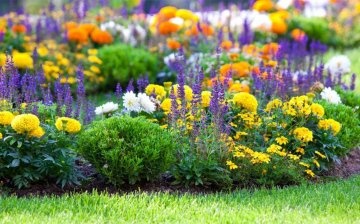
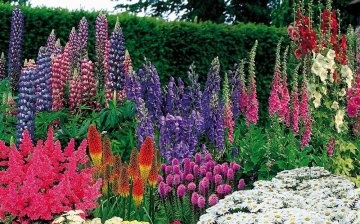

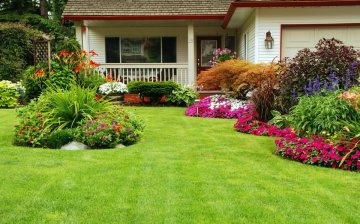
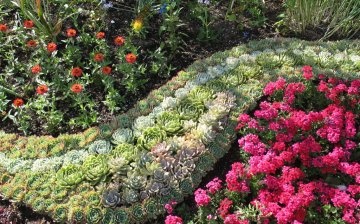
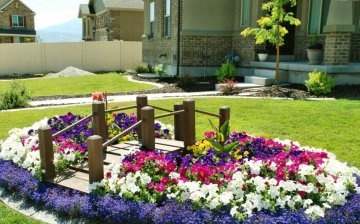









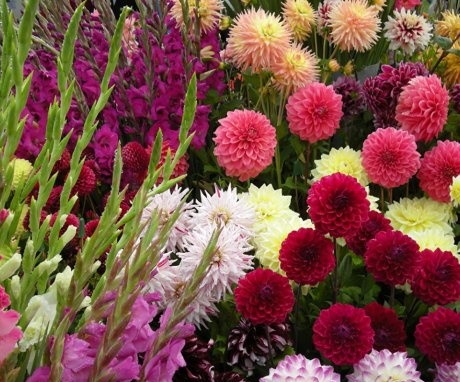
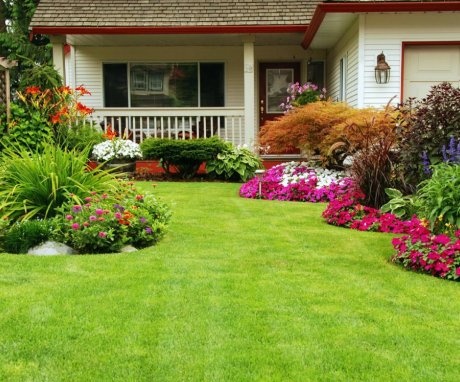
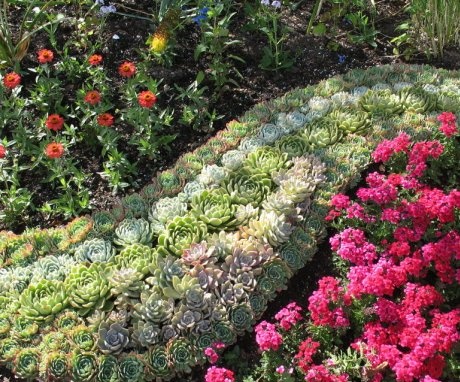
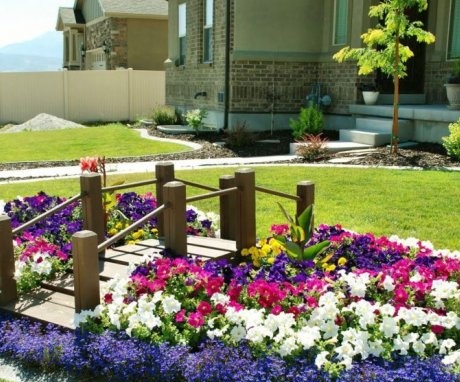
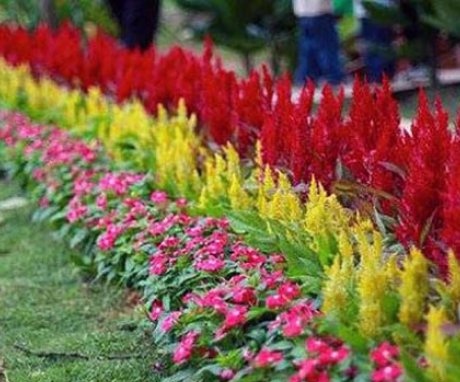
Yes, a good approach, I never thought about such an option for planting plants, but of course I thank for the idea, I will need to make a small flower bed in the country for a test. I think everything will work out.
I still use annuals and bulbs. I try to plant tulips so that they can then be painlessly dug out without damaging annuals - in baskets. But with perennials it is not very successful yet. Even in the article, shade-loving and light-loving plants are simultaneously proposed. The same avilegia will grow better in shade and partial shade, and Aubrieta loves the sun.